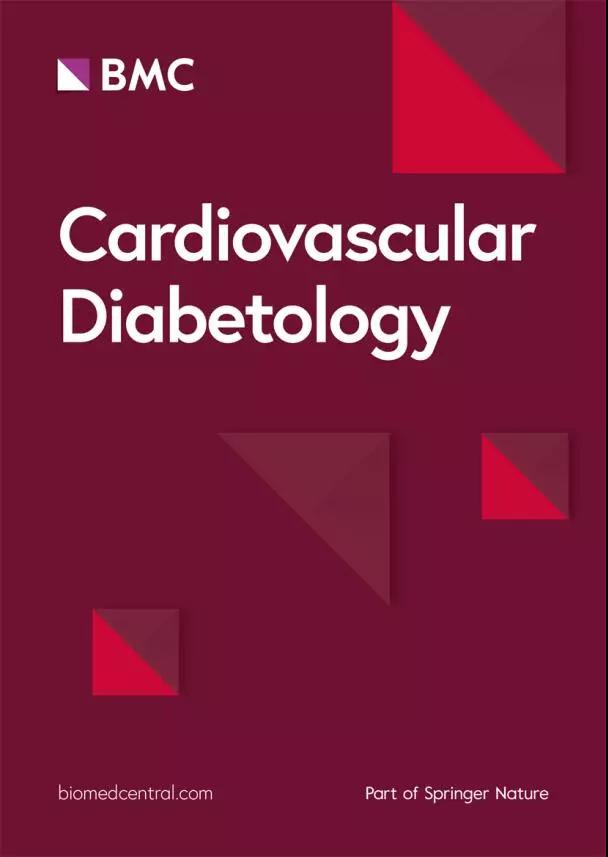身体成分在左心室重塑、反向重塑和射血分数轻度降低型心力衰竭临床预后中的作用:"肥胖悖论 "的更多知识
IF 10.6
1区 医学
Q1 CARDIAC & CARDIOVASCULAR SYSTEMS
引用次数: 0
摘要
虽然 "肥胖悖论 "已在射血分数降低型心力衰竭(HFrEF)和射血分数保留型心力衰竭(HFpEF)中得到全面阐明,但对于射血分数轻度降低型心力衰竭(HFmrEF),身体成分在左心室重塑、左心室反向重塑(LVRR)和临床预后中的作用仍不清楚。我们的研究是一项基于超声心动图的单中心、前瞻性研究。研究纳入了2016年1月至2021年12月期间连续就诊的HFmrEF患者,定义为左室射血分数(LVEF)在40%至49%之间的HF患者。在随访3个月、6个月和12个月时再次进行超声心动图检查,以动态评估左心室射血分数(LVRR)。本研究采用体重指数(BMI)、脂肪量、无脂肪量、体脂百分比(PBF)、CUN-BAE 指数和瘦体重指数(LMI)作为人体测量参数来评估身体组成。主要结果是 LVRR,定义为(1)左心室舒张末期直径指数(LVEDDI)下降超过 10%,或 LVEDDI < 33 mm/m2;(2)与基线超声心动图相比,LVEF 绝对值增加超过 10 个点,或随访 LVEF ≥50%。次要结果是因心房颤动再次住院或心血管死亡的复合结果。共有 240 名 HFmrEF 患者参与了我们的正式分析。根据超声心动图进行为期一年的随访后,113 例(47.1%)患者出现了 LVRR。与无 LVRR 的患者相比,LVRR 患者的脂肪量(21.7 千克对 19.3 千克,P = 0.034)和 PBF(28.7% 对 26.6%,P = 0.047)更高。人体测量参数与基线 LVEDDI 之间存在显著的负相关(所有 P 均小于 0.05)。BMI、脂肪量、PBF、CUN-BAE 指数和 LMI 较高的 HFmrEF 患者 LVEF 的增加和 LV 质量指数(LVMI)的下降更为明显和持久。单变量 Cox 回归分析显示,较高的体重指数(HR 1.042,95% CI 1.002-1.083,P = 0.037)和脂肪量(HR 1.019,95% CI 1.002-1.036,P = 0.026)均与 HFmrEF 患者较高的 LVRR 累积发生率显著相关,而这种关系在调整模型中消失。中介分析表明,BMI 和脂肪量与 LVRR 的关系完全由基线 LV 扩张中介。此外,较高的脂肪量(aHR 0.957,95% CI 0.917-0.999,P = 0.049)和 PBF(aHR 0.963,95% CI 0.924-0.976,P = 0.043)与较低的不良临床事件风险独立相关。身体成分对 LVRR 和 HFmrEF 的临床结局起着重要作用。对于 HFmrEF 患者来说,体重指数和脂肪量与 LVRR 的累积发生率呈正相关,而较高的脂肪量和 PBF 可预测较低的不良临床事件风险,但不能预测 LMI。本文章由计算机程序翻译,如有差异,请以英文原文为准。
The role of body composition in left ventricular remodeling, reverse remodeling, and clinical outcomes for heart failure with mildly reduced ejection fraction: more knowledge to the “obesity paradox”
Although the “obesity paradox” is comprehensively elucidated in heart failure (HF) with reduced ejection fraction (HFrEF) and HF with preserved ejection fraction (HFpEF), the role of body composition in left ventricular (LV) remodeling, LV reverse remodeling (LVRR), and clinical outcomes is still unclear for HF with mildly reduced ejection fraction (HFmrEF). Our study is a single-centre, prospective, and echocardiography-based study. Consecutive HFmrEF patients, defined as HF patients with a left ventricular ejection fraction (LVEF) between 40 and 49%, between January 2016 to December 2021 were included. Echocardiography was re-examined at 3-, 6-, and 12-month follow-up to assess the LVRR dynamically. Body mass index (BMI), fat mass, fat-free mass, percent body fat (PBF), CUN-BAE index, and lean mass index (LMI) were adopted as anthropometric parameters in our study to assess body composition. The primary outcome was LVRR, defined as: (1) a reduction higher than 10% in LV end-diastolic diameter index (LVEDDI), or a LVEDDI < 33 mm/m2, (2) an absolute increase of LVEF higher than 10 points compared with baseline echocardiogram, or a follow-up LVEF ≥50%. The secondary outcome was a composite of re-hospitalization for HF or cardiovascular death. A total of 240 HFmrEF patients were enrolled in our formal analysis. After 1-year follow-up based on echocardiography, 113 (47.1%) patients developed LVRR. Patients with LVRR had higher fat mass (21.7 kg vs. 19.3 kg, P = 0.034) and PBF (28.7% vs. 26.6%, P = 0.047) compared with those without. The negative correlation between anthropometric parameters and baseline LVEDDI was significant (all P < 0.05). HFmrEF patients with higher BMI, fat mass, PBF, CUN-BAE index, and LMI had more pronounced and persistent increase of LVEF and decline in LV mass index (LVMI). Univariable Cox regression analysis revealed that higher BMI (HR 1.042, 95% CI 1.002–1.083, P = 0.037) and fat mass (HR 1.019, 95% CI 1.002–1.036, P = 0.026) were each significantly associated with higher cumulative incidence of LVRR for HFmrEF patients, while this relationship vanished in the adjusted model. Mediation analysis indicated that the association between BMI and fat mass with LVRR was fully mediated by baseline LV dilation. Furthermore, higher fat mass (aHR 0.957, 95% CI 0.917–0.999, P = 0.049) and PBF (aHR 0.963, 95% CI 0.924–0.976, P = 0.043) was independently associated with lower risk of adverse clinical events. Body composition played an important role in the LVRR and clinical outcomes for HFmrEF. For HFmrEF patients, BMI and fat mass was positively associated with the cumulative incidence of LVRR, while higher fat mass and PBF predicted lower risk of adverse clinical events but not LMI.
求助全文
通过发布文献求助,成功后即可免费获取论文全文。
去求助
来源期刊

Cardiovascular Diabetology
医学-内分泌学与代谢
CiteScore
12.30
自引率
15.10%
发文量
240
审稿时长
1 months
期刊介绍:
Cardiovascular Diabetology is a journal that welcomes manuscripts exploring various aspects of the relationship between diabetes, cardiovascular health, and the metabolic syndrome. We invite submissions related to clinical studies, genetic investigations, experimental research, pharmacological studies, epidemiological analyses, and molecular biology research in this field.
 求助内容:
求助内容: 应助结果提醒方式:
应助结果提醒方式:


